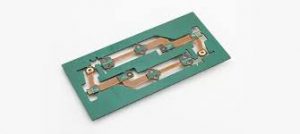Can rigid flex boards be used in high-frequency applications?
rigid flex boards
Rigid flex circuit boards are well-suited to applications in which a combination of reliability, durability and flexibility is needed. Some examples include medical imaging equipment, military missile guidance systems and automotive electronics. Rigid flex PCBs are able to resist vibration, shock and other environmental challenges due to their physical characteristics and construction techniques.
The rigid flex board plated through holes (PTH) provide electrical interconnections between the rigid and flexible sections of the board. It also allows the rigid flex circuit to mount components on both sides, increasing component density and enabling the use of smaller, more lightweight circuitry in electronic assemblies.
Unlike traditional rigid PCBs, rigid flex circuit boards don’t require extra connectors or cables to connect the rigid and flexible areas together, which simplifies the manufacturing process and makes it more cost effective. This is especially important in long production runs, where the streamlined assembly can help to speed up the time to market for new products.

Can rigid flex boards be used in high-frequency applications?
One of the most common questions that arises is whether a rigid flex board can be used in high-frequency applications. As a general rule, high-frequency applications are more likely to require a PCB that is able to withstand the increased stress and strain that comes with higher temperatures. This is because heat can cause electrical issues and a reduction in circuitry lifespan. Rigid flex circuit boards, however, can be made to withstand these conditions by implementing specific design and manufacturing considerations. These include using materials that have a low coefficient of thermal expansion, employing heat sinks to dissipate excess heat and optimizing the thickness and copper plane configurations.
The layer transition between the rigid and flexible sections of a rigid flex circuit board is another factor that can affect performance in high-frequency applications. Unsuccessful transitions between these layers can lead to impedance mismatches and signal degradation. In order to avoid this, it is important that engineers carefully consider their designs during the layout phase.
Choosing a rigid flex PCB that is suitable for your unique application requires careful research and consultation with a trusted and experienced manufacturer. Attentive consideration to both the rigid and flex PCB solution during this phase is critical, as it will ensure that the final product is robust, resilient and able to meet your specific requirements. To learn more about how a rigid flex board can benefit your next project, contact Royal Circuits to connect with an expert team member today.